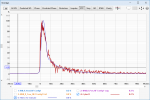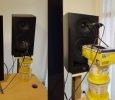so wy no speaker tester show Group delay ?. Ironic: Is there a Hifi Mafia that forbid that and speakers are only designed that they look good in FR and how good they are with transients is ignore or the GD delay

I think it would be good to see too. If 2 speakers have comparable FR, max SPL, features, cost, etc - then GD would be a good differentiator because it reflects driver quality, cabinet design (ported vs sealed, volume vs tuning freq), and filter affects. I think GD would be better to see than Step/ETC because it specifically shows 1 thing, whereas Step/ETC can look 1 way but actually be 2 different things.
I dont care what other say it is pysical logic that a stronger magnet motor can be more precise.
Maybe? I don't know enough about that side of things. Thinking about it, say there are 2 woofers that are the same except 1 has a stronger magnet. If you were to put equal voltage to each woofer, wouldn't that mean the stronger one would be louder (because the stronger magnet would react with more force against the voltage)? So to have the same SPL, wouldn't the stronger one need less voltage? And maybe that comes with other drawbacks? Is that what QTC measures as a ratio?
Anyway, as an experiment I thought to check the "filtered impulse" to see if there was any difference between HS5 vs IN8 whilst ignoring GD, and it seems there is a slight difference.
First I compared each speaker to a dirac impulse at a frequency they both operate strongly at;

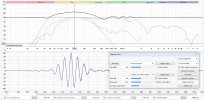
Is the dirac impulse "perfect" when looked at in this regard? Because the HS5 seems to "build up" quicker than it, and "let down" quicker too. Is that indicitive of an overly strong magnet?
Comparing the 2 speakers to each other at the same frequency;
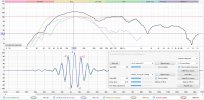
REW aligned them so that their 100% peaks were inline. This also shows the HS5 building up quicker and letting down quicker. Maybe this is splitting hairs, but the HS5 might be better, because the HS5 only has 2 peaks over 90% (-1 and 0) whereas the IN8 has 3 (-1, 0, and +1).
Maintaing that alignement but looking at different frequencies;
- 100Hz looks similar:
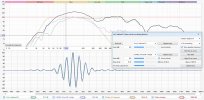
- 170Hz is similar, but HS5 is getting worse (nearly 3 over 90%) whilst IN8 has improved (only 2 over 90% now):
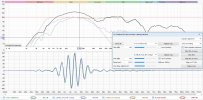
- 200Hz shows HS5 has gotten worse with 3 peaks over 90%:
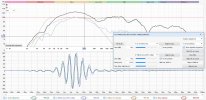
The alignment was starting to get off at 200Hz, so I let REW re-align them;
- At 200Hz it now looks like IN8 builds up faster and lets down faster:

- 135Hz looks different when viewed this way:
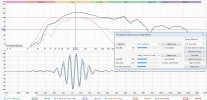
I thought maybe that wasn't the "fairest" alignment, so I manually set this one;
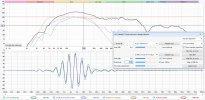

So I don't know if everything I've just done is actually showing magnet differences, because they seem to swap between 2 and 3 strong peaks. If 2 strong peaks was indicitive of better, than neither is always better.



